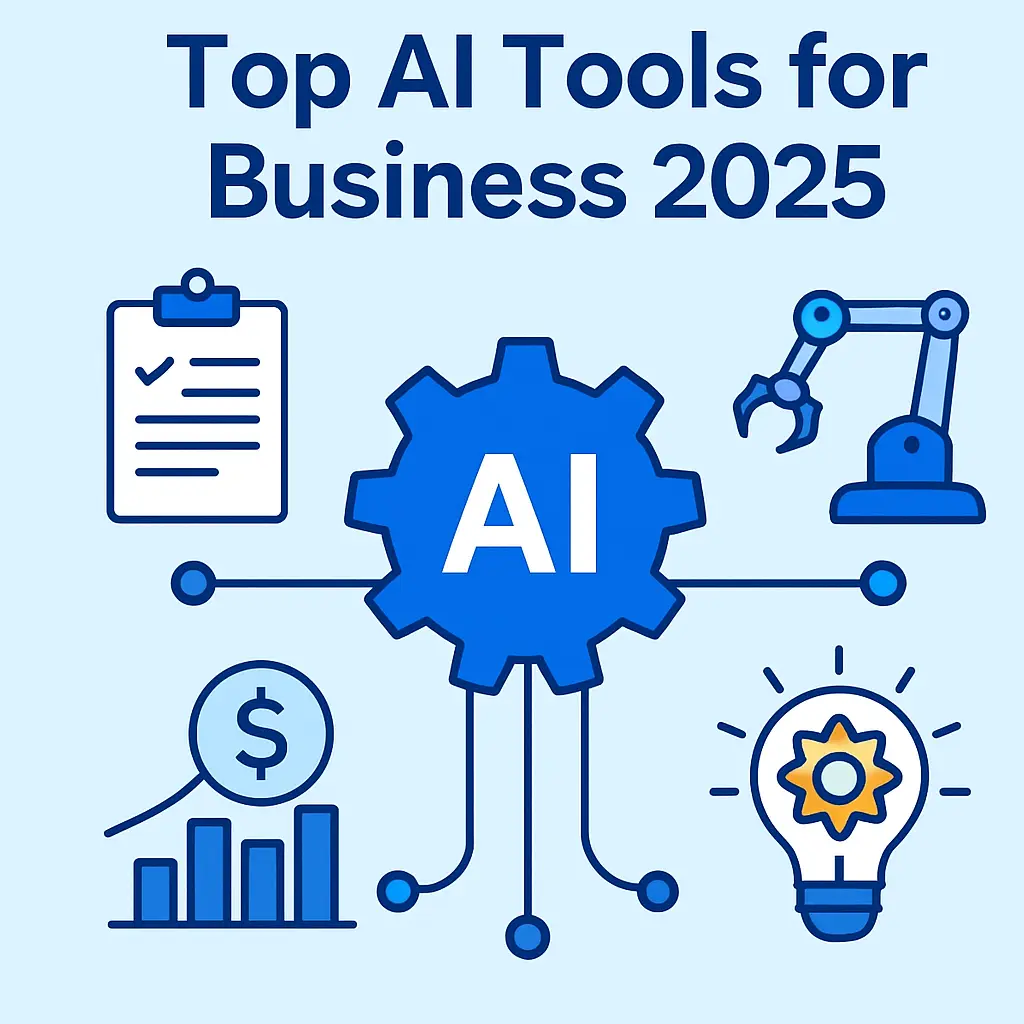Introduction
The business world in 2025 is evolving faster than ever before, and one driving force behind this massive transformation is Generative AI. What started as an experimental technology just a few years ago has now become a mainstream tool for companies of every size. From startups to global enterprises, businesses are embracing generative AI to speed up processes, cut costs, and boost creativity.
Generative AI is not just about writing text or creating images; it is a full-scale productivity engine. Whether it’s drafting emails, analyzing data, building marketing campaigns, writing software code, or even designing products, this technology is changing how companies operate. In this blog, we will explore how generative AI is boosting business productivity in 2025, why it is a hot search topic, and how different industries are making the most of it.
What is Generative AI?
Generative AI is a form of artificial intelligence that can create new content and ideas based on existing data. Unlike traditional AI that only analyzes, generative AI can actually produce text, images, audio, videos, designs, and even business strategies. Tools like ChatGPT, Jasper AI, MidJourney, and GitHub Copilot are prime examples of generative AI that have already gained global adoption.
The difference between generative AI and regular automation is creativity. Businesses are no longer limited to rigid scripts and processes. Instead, they have AI systems that can brainstorm, draft, and adapt in real time—making them far more productive.
Why Generative AI is Trending in 2025
Search data and business reports confirm that generative AI is among the top searched business trends in 2025. The reason is simple: it delivers direct results that companies can measure.
- Time Savings: Routine tasks like writing reports, creating presentations, or drafting marketing copy can now be done in minutes.
- Cost Efficiency: Businesses reduce the need for large teams in areas like content creation or customer support.
- Innovation: Generative AI introduces fresh ideas and creative solutions that humans may overlook.
- Scalability: Startups can scale faster without needing huge budgets, while large companies can streamline their operations.
This combination of productivity, cost savings, and innovation has made generative AI one of the most talked-about technologies worldwide.
Key Ways Generative AI Boosts Business Productivity
1. Automated Content Creation
Businesses spend significant resources on blogs, ad copy, social media posts, and email campaigns. Generative AI helps by drafting high-quality content in a fraction of the time. For example, a marketing team that used to take 5 days to prepare a product launch campaign can now create all necessary copy within a few hours.
2. Faster Software Development
Coding assistants like GitHub Copilot or AI coding platforms speed up the software development process. Developers no longer have to write every line manually. Instead, they can rely on AI to suggest functions, debug errors, and even generate complete modules. This allows businesses to bring their digital products to market faster.
3. Smarter Customer Support
Chatbots powered by generative AI are no longer robotic. They can understand customer queries in natural language, provide personalized solutions, and even escalate issues only when necessary. Companies like airlines, e-commerce platforms, and banks are using AI chatbots to cut wait times and improve customer satisfaction.
4. Data Analysis and Decision-Making
Generative AI can process massive datasets and generate easy-to-understand reports. For example, instead of hiring a team of analysts to dig into sales data, a business can use AI to produce summaries, highlight trends, and even recommend next steps. This leads to quicker, more informed decisions.
Generative AI is not just analyzing data—it is becoming the partner that translates complex numbers into clear business actions.
Business Innovation Expert
5. Creative Design and Innovation
Product design, advertising graphics, and even video creation can now be done with AI tools. A small business that could never afford a full creative team can now compete visually with larger companies by using AI-generated designs.
Industry-Specific Applications
E-commerce
E-commerce companies are using generative AI to create personalized product descriptions, AI-powered recommendations, and even customer-specific emails. This improves conversions and boosts sales without adding more staff.
Healthcare
Generative AI helps doctors and researchers by analyzing patient data, suggesting treatment options, and even generating diagnostic reports. This saves hours of paperwork and improves patient care.
Finance
Banks and financial institutions are using AI to detect fraud, predict market trends, and generate customer insights. Reports that used to take analysts weeks are now ready in minutes.
Education
EdTech platforms use generative AI to create customized learning experiences, practice tests, and course content for students. This personalizes education and reduces teacher workload.
Real Estate
Real estate companies are adopting AI to generate attractive property listings, create 3D virtual tours, and analyze pricing trends. This helps agents close deals faster.
Benefits Businesses Can’t Ignore
- Increased Efficiency – Tasks that once took hours now take minutes.
- Lower Costs – Reduces the need for large teams.
- Scalability – Businesses can expand faster without proportional increases in resources.
- Competitive Advantage – Early adopters of AI stand out in their industries.
- Employee Support – Instead of replacing workers, AI helps them focus on higher-value tasks.
Challenges and Risks
Of course, generative AI is not without challenges. Some of the main concerns include:
- Accuracy Issues: AI can sometimes generate incorrect or misleading content.
- Data Privacy: Handling sensitive business or customer data requires strict policies.
- Over-Reliance: Companies must avoid depending entirely on AI and maintain human oversight.
- Ethical Concerns: From copyright issues to deepfakes, misuse of generative AI is a growing debate.
These challenges highlight the importance of balanced adoption: AI should be used as a support tool, not a replacement for human intelligence.
Future of Generative AI in Business
By the end of 2025, analysts predict that over 70% of businesses will integrate generative AI into daily operations. Companies that fail to adopt it risk falling behind competitors who enjoy faster processes, lower costs, and stronger customer engagement.
Looking ahead, we may see:
- AI-generated virtual employees handling end-to-end workflows.
- Voice-first AI systems replacing text tools for greater speed.
- Deeper integration with blockchain and cybersecurity for secure AI operations.
- Expansion into industries like law, architecture, and journalism.
Conclusion
Generative AI is not just a trend—it’s a revolution in productivity. In 2025, it has become one of the most searched and discussed business topics because its impact is real and measurable. From content creation and coding to data analysis and customer service, generative AI is reshaping how companies work, grow, and compete.
Businesses that embrace this technology today are setting themselves up for long-term success, while those who resist may find themselves left behind in a world that is moving faster than ever before.
Generative AI has opened the door to a future where businesses can do more with less, and in today’s competitive landscape, that is the ultimate formula for growth.
















Leave a comment